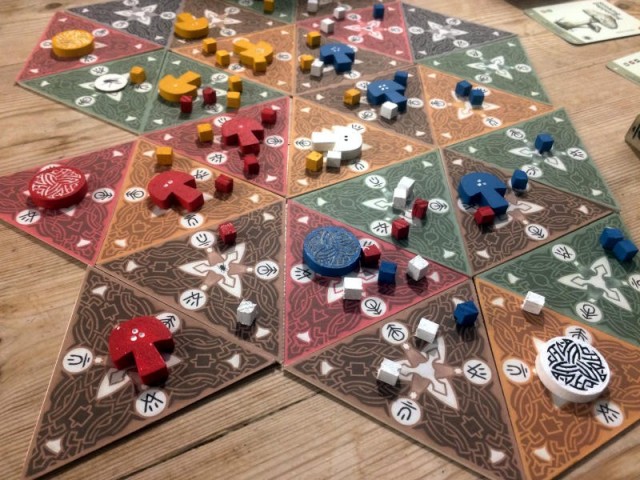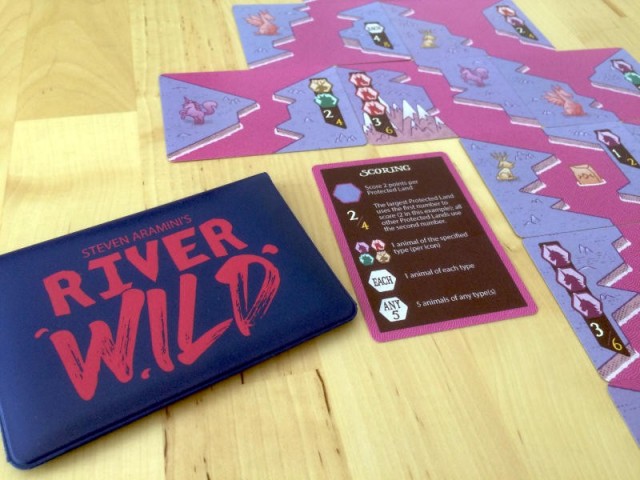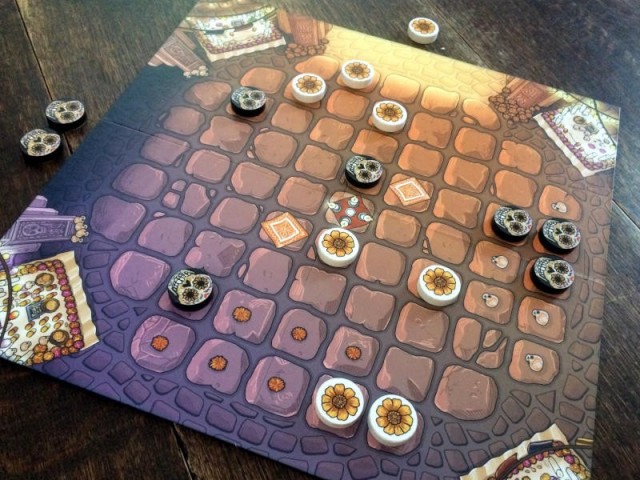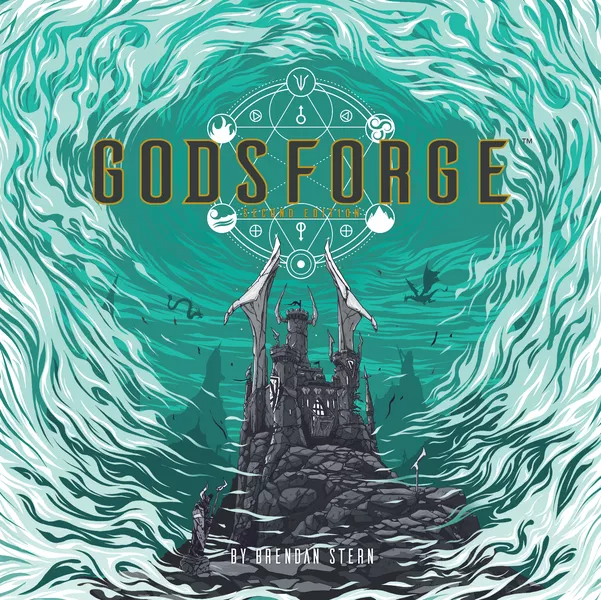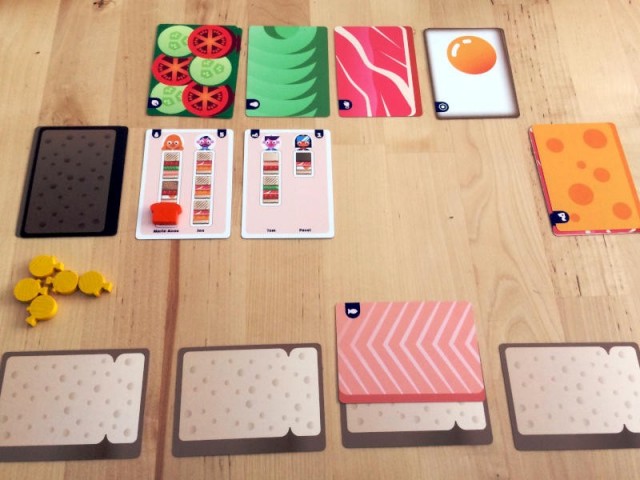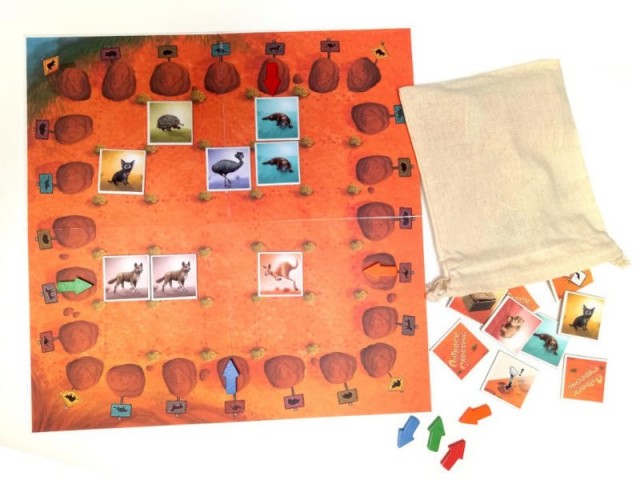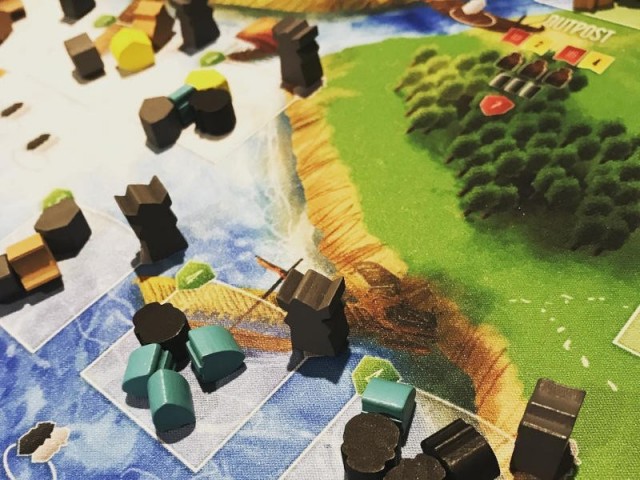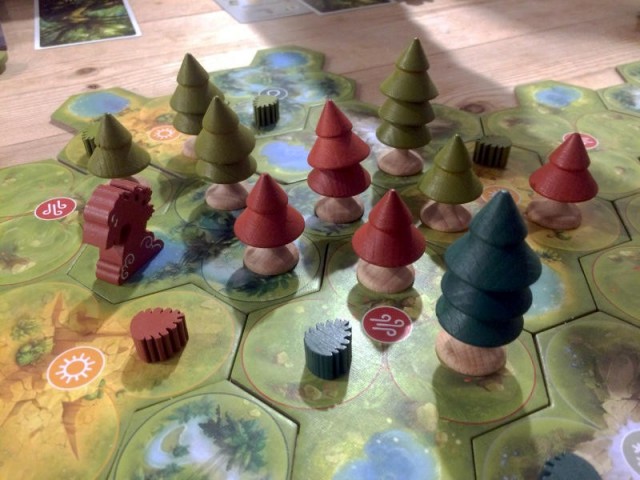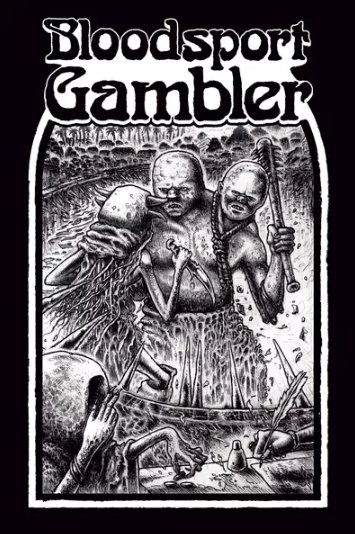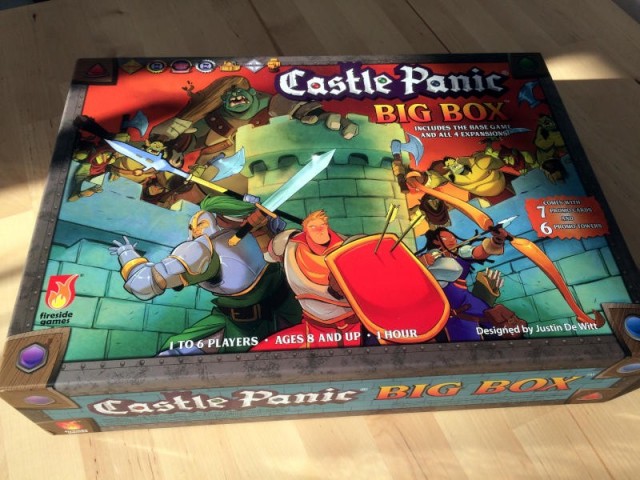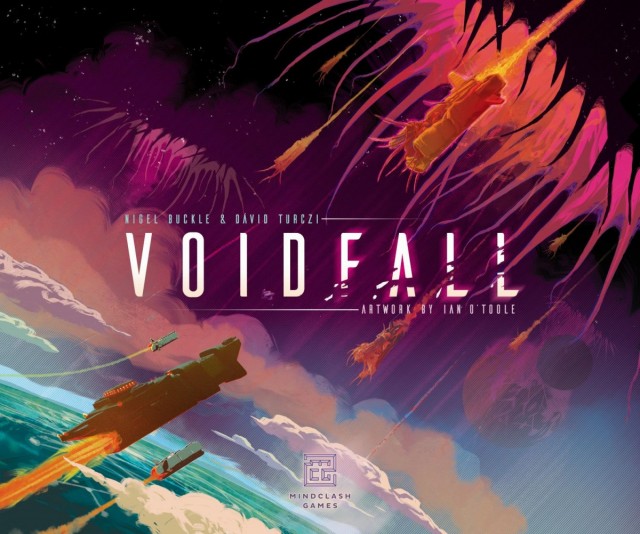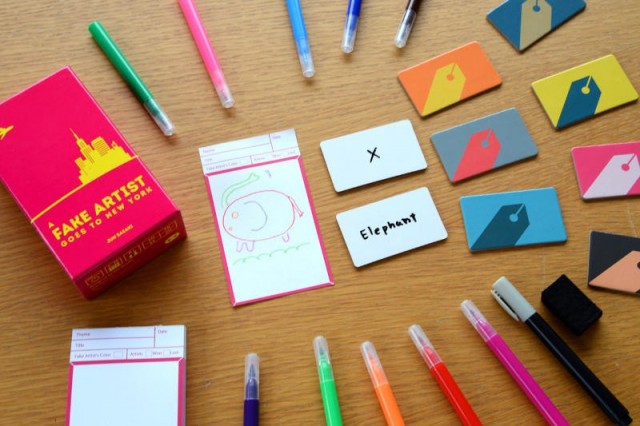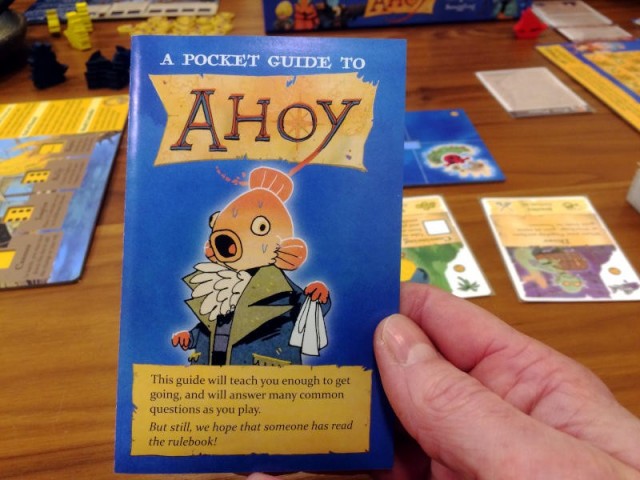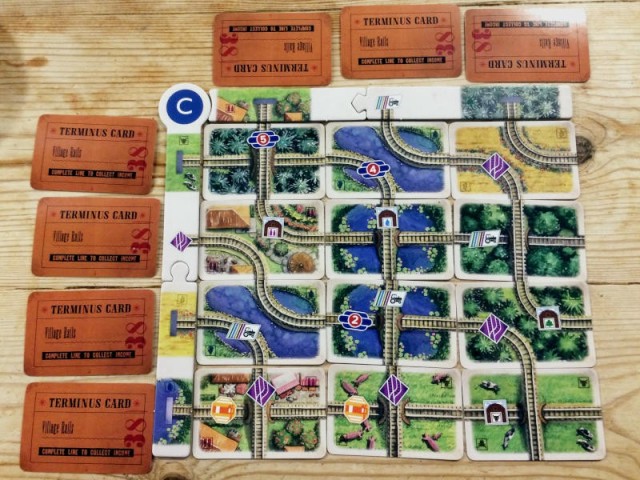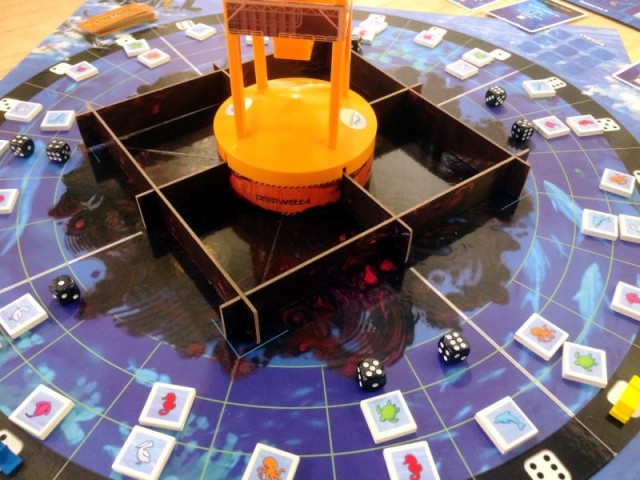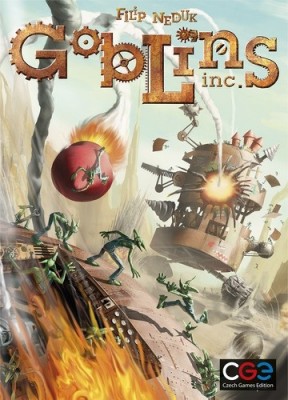I like Goblins Inc., but not as much as I want to. As a result it’s difficult to review. On one hand, the rules, the advertising, and the game itself seem are aiming for a specific experience that goes undelivered. On the other, I find myself enjoying what’s there anyway. It’s 75% of the way to amazing, which is pretty good. But man, that last 25%…
Each player is a goblin worker, tasked with creating and fighting enormous fighting vehicles. It’s a big job for just one goblin, so you’re assigned a partner for each of the three rounds. You and your partner will take turns adding five pieces to your mech, while the other team does the same. After that, the two sides will duke it out in a battle to the finish. The winners will get extra points, but everyone is eligible to claim points for objectives that were selected secretly. Two wrinkles here: first of all, you get a different partner in every round. Secondly, your partner has his own set of goals. That may make cooperation a little more complicated.
The obvious inspiration here is Galaxy Trucker. The two-step round, the placing of tiles on a board, the wanton desctruction that leads to a lot of good stories, it’s all clearly derived from Vlaada Chvatil’s much-loved game. Make no mistake though, this is a very different experience. The biggest one is a higher level of interaction. Half of everything a vehicle does is controlled by your partner, with whom you cannot communicate and strategize. And when your vehicle is done you don’t run it through a gauntlet of event cards, but through a capricious round of combat that is loaded with dice and double-guessing.
The combat is a lot of fun, and probably the high point of the game. One partner is the pilot, while the other is the tacticion. The pilot will determine the facing of the mech and what side of your opponent gets hit, and the tacticion will select a special power-up card that will give your side some bonus in combat. Based on the number of weapons you put on your ship that face in the proper direction, you will roll a handful of dice to see what part of your opponents will be hit. All of these decisions, where to face, what side to aim for, and what card you take are all determined simultaneously and revealed at once. It’s three layers of double-guessing before rolling dice, and it’s really fun. The overall effect is like high-speed bumper cars where one person steers and the other works the pedals. And of course, scoring a hit in the right place may knock off a whole chunk of the opposing ship. It’s ridiculous, and I love it.
Another more design-oriented quality I like is that the decision-making doesn’t have a lot of bottlenecks where things can bog down, a trap it easily could have fallen into. Each individual choice is straightforward, and there’s no point in thinking too strategically since there are a myriad of ways to ruin your plan. In fact, those who take these things too seriously should probably look elsewhere. Whereas you could always get better at Galaxy Trucker, I think there’s a ceiling for how well you can play Goblins Inc. Better to just strap in and go with it.
The one spot where you actually can do some planning is the objectives. Each player has their own deck of them, though all of the decks are identical. Each round you’ll draw seven, and choose four to keep after your mech is finished. Some will give you points for destroying specific types of tiles on your opponents, others will give you points for having specific types on your own ship. That influences what tiles you keep for your own ship, since you will have the chance to pass some to your opponents. There’s also an objective that is actually two different ones: you can either predict a win or a loss by your team and score four points as a result. If you want strategy, this is as close as you’ll get.
But the objectives where I start to have problems with Goblins Inc. The back of the box and the rules really play up the idea of conflicting objectives, where you and your partner want different things. The intent is clear: you shouldn’t be able to trust your partner completely. But in practice it just doesn’t work. Say for a moment that you have chosen the one that will let give you four points for a loss. The problem is, most winning teams will usually make more than four points for a victory. And if you lose, it’s very possible that you weren’t able to fulfil many of your objectives, since your machine is now a smoldering wreck. So you almost always will get more out of being a good teammate, doing your best, and then picking good objectives, a choice that’s made after the machine is finished. Some negative objectives that promoted sabotage would make the game entirely more interesting.
Negative objectives would also help the guy in last place. The game is three rounds, and if you and your partner don’t win either of the first two you’re pretty much out of the game. Some more sabotage-y objectives would give the guy in last place a chance to still be in the game in the third round.
The lack of ambiguity in the partnerships isn’t a deal-breaker, but it’s disappointing. They had me expecting it to be one of those games where you can well and truly stab someone in the back, and it really isn’t. Effectively they remove a layer of interaction with the inability to make me mistrust my partner. Oh sure, you could always just throw the round if you’re going to lose the game anyway. I did that in my first game, and it was 1) easy to do and 2) hilarious. But even then I would have done a little better if I’d played to win. I essentially just played kingmaker against my partner. It’s clear they WANTED that ambiguity, but they were either unable or unwilling to truly pursue the idea to its logical conclusion. The most annoying thing is that it’s a simple fix, as easy as adding maybe 10 objectives to each player’s deck. It’ll probably be in some expansion down the line, but better to just do it right the first time.
But in all I like Goblins Inc. The parts that work are a lot of fun, especially that bizarre combat. I love how it rotates partners every round. And if parts of it fail, at least it’s because it tries some things that I’ve never seen before. I just wish it had been able to pull them off, because that’s a game I would have wanted to play.
 Games
Games How to resolve AdBlock issue?
How to resolve AdBlock issue? 